News
What crypto (still) gets wrong
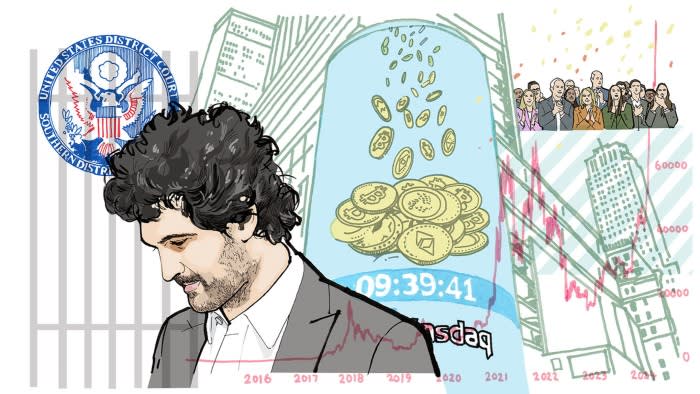
Jay Gatsby, Albert Einstein, Frodo Baggins, John Pierpont Morgan, Michael Jordan, Bill Gates, Elon Musk, Mark Zuckerberg, Warren Buffett, Michael Milken, Bernard Madoff, Charles Ponzi — the list of people to whom Sam Bankman-Fried has been compared is an extraordinary one.
He seems destined to be remembered alongside those last three names, after being convicted of what prosecutors called “one of the largest financial frauds in American history”. The Californian, who has just turned 32, is set to be sentenced this month on charges that could see him spend decades behind bars.
But what is our verdict on crypto? Have we learnt the lessons from the disastrous 2022 crash in digital assets? To judge from recent action in the crypto market, the answer appears to be no.
Since hitting bottom after FTX collapsed into bankruptcy with a $9bn-ish hole in its balance sheet in November 2022, crypto market values have roughly tripled. Bitcoin’s price rose above $70,000 this week to touch record highs. A new wave of enthusiasm is growing, with institutions such as BlackRock and Invesco moving into the market.
Oddly, both critics and defenders of digital assets have often tried to frame the Bankman-Fried case as if it had nothing more to do with the fundamentals of crypto than if he and his cronies had committed fraud through telemarketing or selling shoddy double glazing.
For fear of confusing the jury, prosecutors at Bankman-Fried’s US fraud trial, which I covered for the FT, argued that the embezzlement of customer money from his FTX cryptocurrency exchange to his private trading firm Alameda was “stealing, plain and simple”.
Meanwhile, crypto investor and former Trump aide Anthony Scaramucci, who admits to being taken in by Bankman-Fried, argues that the case has purged crypto’s demons. “What he did was absolutely cataclysmic, and it was tragic. But here’s the great news about what he did. It’s behind us . . . We flushed out a lot of excess in the system, and leverage, and a lot of chicanery,” he said in an interview with the crypto group Circle late last year.
“And we’re now in the aftermath of that . . . all of a sudden we’re mainstreaming the ideas around digital property and digital assets . . . So there’s always a silver lining somewhere.”
Scaramucci speaks for many who have tried to rebuild the momentum around digital assets. But the disaster at FTX, and the wider calamity in crypto markets, cannot be brushed off as purely the result of criminal behaviour by a small number of people.
Bankman-Fried faces a stiff punishment. We should not let crypto itself off the hook too easily either. The experience of the crypto crash shows four deep-rooted problems that are as relevant today as on the day Bankman-Fried filed for bankruptcy.

1. A new set of middlemen
If you want to try to get your head around crypto, starting with the technology is often a recipe for further confusion. You can spend hours contemplating blockchains, hash rates, consensus mechanisms — and more esoteric subjects like parachain auctions and flash loans — without getting any closer to understanding how crypto works in the real world.
Technical explanations will almost always tell you that crypto’s key attribute is that it is decentralised. It is not. This is problem number one.
The notion of decentralisation has been at the heart of crypto since Satoshi Nakamoto, the pseudonymous creator of bitcoin, launched the modern cryptoverse in their 2008 white paper. The idea was that blockchain technology, which creates an unchangeable record of transactions shared between multiple computers, could supplant intermediaries such as banks, brokers and regulators.
The white paper implies a vision for digital assets that runs something like this. Step One: invent a clever system that allows payments with no middlemen (this is bitcoin). Step Two: popularise bitcoin so that banks and financial institutions become redundant. Step Three: build on top of this innovation to make a whole new economy that is better for everyone.
In reality, crypto got stuck at Step Two. Decentralisation did not catch on because it requires people to take absolute responsibility for their money. We have all read the stories about people who forgot the password to unlock their crypto fortune, or threw away a tiny hard drive back when crypto was worth peanuts, only to find that it is now worth millions. In a decentralised world, there is no mechanism to recover from these human errors.
These days, crypto payments more often flow through stablecoins, tokens designed to be worth $1, rather than bitcoin. A handful of centralised companies, such as Tether and Circle, dominate this sector. A small number of centralised exchanges (of which FTX was once a leading example) have meanwhile cornered the market for trading.
These crypto intermediaries are in reality more centralised, less accountable and less transparent than their analogues in mainstream finance. Consider FTX. You can say what you want about scandals in the banking system over the years, but it has been a long time since a major bank failed because the people in charge simply took all the customers’ deposits and made off with them.
Tether, with a $100bn market capitalisation, is three times bigger than its next rival — effectively serving as crypto’s reserve currency. It fought a years-long battle to avoid telling people where it kept the stockpile of assets that backed its dollar token.
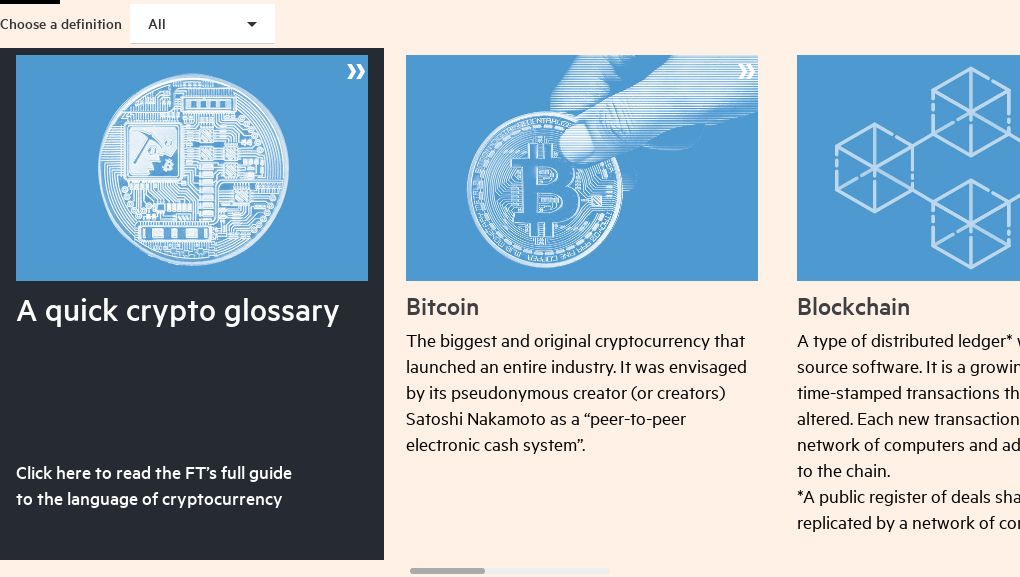
Now, a new set of central institutions are entering the market. It’s never easy to figure out exactly why crypto markets are moving. Crypto is a vibes-based financial market. The lack of fundamental anchors such as earnings or interest rates mean that crypto trades overwhelmingly on sentiment. But the proximate cause of the recent return of “good vibes” to the crypto market appears to be the Securities and Exchange Commission’s decision to allow direct crypto exchange traded funds (ETFs) run by investment institutions to enter the US market.
The irony of this development is remarkable. The bitcoin white paper, crypto’s founding text, says: “The main benefits are lost if a trusted third party is still required.” When you consider that the big positive news in cryptoland today is that BlackRock has opened a bitcoin fund that trades on the Nasdaq, it’s hard to escape the conclusion that the main benefits have been lost.
It is notable that BlackRock-managed funds also backed Bankman-Fried’s FTX with venture capital funding just over a year before it collapsed. It was one of many top Wall Street and Silicon Valley names whose funding helped give FTX its veneer of legitimacy, although the size of these investments was relatively small. For all the talk of crypto’s “decentralised” structure and antagonism with “traditional finance”, it has often been big money managers pushing the gas.
BlackRock’s bitcoin ETF reached $10bn faster than any ETF in US history. Although all such funds benefit from the run-up in crypto prices, they will continue to earn fees as long as retail investors are hanging on for the ride.
The persistence of middlemen in crypto builds on customer demand. People on the whole have enough common sense to know that we are fallible. The very clever tech behind bitcoin was undermined because it didn’t take human nature into account.
 Changpeng Zhao, co-founder of Binance
Changpeng Zhao, co-founder of Binance
2. Problems with authority
Arthur Hayes, the former chief executive of crypto exchange BitMex, once commented: “While bitcoin is supposed to be this libertarian, be-your-own-bank kind of thing, most people are pretty lazy, and are perfectly fine with buying some crypto and holding it on the exchange as if the exchange was a bank.”
Hayes himself is a captivating figure, a polymath entrepreneur whose skills in everything from ballroom dancing to bodybuilding and derivatives trading carried him from a childhood in Buffalo, New York, to Deutsche Bank’s trading floor in Hong Kong, and then to the top of the crypto world. He was in some ways a forerunner to SBF, a dyed-in-the-wool finance guy who brought Wall Street acumen into cryptoland.
Starting in 2016, Hayes pioneered the financial instruments that became the most traded in crypto — which are actually hyper-leveraged derivatives contracts based on crypto prices, not the crypto tokens themselves. But he lost control of his company, BitMex, and was forced to plead guilty in the US in a 2020 case that centred around failure to respect US jurisdiction and money-laundering rules.
Even with the example of Hayes hanging over them, crypto companies’ persistent battle with national authorities points to their second fundamental failing. Crypto still often wants to be above the law.
This impulse goes back to the invention of bitcoin in reaction to the failure of banks and regulators in the global financial crisis. But the result has been a complete perversion of the initial vision.
We are invited to replace financial intermediaries such as banks — which are overseen by broadly competent, democratically accountable regulators — with a crypto-financial system that allows a sleep-deprived 28-year-old like Bankman-Fried untrammelled power over a $40bn financial institution. I think it’s very hard to argue this is a good idea.
The only person with real power over FTX was Bankman-Fried. This was partly because his venture capital investors didn’t insist on proper governance. But it was also because he could base the international exchange in the Bahamas and beam his services into countries around the world from offshore.
In the face of offshore entities such as FTX, UK regulators struggled to enforce a ban on crypto derivatives trading brought in to protect amateur investors in 2021. Even the US has not been able to stop its citizens from reaching offshore venues.
The ultimate example of this phenomenon is not actually Bankman-Fried, but his nemesis. Changpeng “CZ” Zhao, founder of Binance, still the largest crypto exchange, made an eleventh-hour offer to buy FTX as it spiralled towards bankruptcy, but then pulled out — dooming Bankman-Fried. Zhao described his company in its early years as a “pirate ship”.
Binance has long refused to name its headquarters, and for years even tried to shroud the location of its main offices. By refusing to make landfall in any country, it was able to drift away from regulatory pressure in one jurisdiction and appear in another. Its local subsidiaries might take the heat, but the main moneymaking engine, its online crypto exchange Binance.com, stayed safely in international waters.
A senior Binance executive once explained the logic bluntly: “We do not want [Binance].com to be regulated ever.” The company claims it has since changed course. Zhao last autumn pleaded guilty to US charges. He could face jail time even after Binance agreed to pay $4.3bn to settle its differences with the Feds.
You could argue that recent developments such as the US ETF launches suggest crypto as it matures is getting over its problems with authority. Crypto is indeed inching towards more regulation. But simply putting an asset such as bitcoin into a regulated vehicle like an ETF doesn’t change the wild west nature of the market that determines crypto prices, which is still fraught with potential for manipulation and abuse.

3. No limits
Crypto promises to “democratise” finance. It takes the power to create new, easily tradable assets out of the hands of a few institutions and gives it to everybody. A helpful parallel is how Twitter and other social media platforms smashed the monopoly of mass publishing. What the internet did to newspapers and broadcasters, crypto promises to do to finance.
Here we need to distinguish between bitcoin and the thousands of other crypto coins out there. The total number of bitcoins is limited by design to 21mn. But for many others, there is no limit on supply. Anyone with a certain level of computer skills can launch a new coin in minutes.
This is a remarkable and revolutionary idea. But is it a good one? So far, unconstrained asset creation in crypto does not have a good record. The crypto analytics company Chainalysis tried to gauge the number of scam tokens launched in 2022 by looking for coins that lost most of their value shortly after launch. Of about 40,000 launches that year, a quarter lost 90 per cent of their value in the first week. Investors were burnt every time.
Unlimited asset printing is also a crucial reason why the crypto market blew itself up in 2022. Within Bankman-Fried’s empire, a token issued by FTX, known as FTT, was used by Alameda as collateral for billions of dollars of borrowing.

Imagine that you have a notebook of 100 sheets of paper, and you write “money” on every page. If you can sell the first sheet to some true believer for $1, then you can give the rest of the notebook a paper value of $99. What if you could then use that $99 as collateral for a loan in real money, which you then spend? This effectively happened during the crypto boom, creating an incredibly fragile bubble of theoretical value.
Hilary Allen, a law professor at the American University Washington College of Law who worked on the congressional commission appointed to study the causes of the financial crisis, explains how crypto took the errors of 2008 one step further.
Before the crisis, she says: “We had a proliferation of financial assets that you could borrow against; leverage went through the roof; complexity went through the roof. You could take a house, create a CDO [collateralised debt obligation], put a derivative on it and have a synthetic CDO squared. But somewhere — very tenuously — there was a house. What crypto does is that it gets rid of the need for the house.”
Without limits and oversight, free-for-all asset creation is ripe for abuse. “My concern about crypto has always been what the traditional financial system would do with it. If traditional finance sees that you can just make up financial assets, they are going to get in on that,” Allen adds.

4. What is it for?
Alienation from mainstream finance has helped to bolster crypto’s appeal. Many people, perhaps especially those around my age who grew up around the 2008 crisis, have developed the suspicion that finance is a self-referential, corrupt and pointless game that helps the rich get richer and screws everybody else.
This critique is painfully true of crypto’s recent history. For all its faults, mainstream finance is crucial to our daily lives. Crypto still doesn’t play a meaningful role in the economy. Its value has always been underpinned by the belief that it is the future of finance. But price rises have run far ahead of any proof of genuinely practical applications gaining real traction.
This list of crypto’s faults is not exhaustive. Its principal real-world application to date has been making life easier for criminals. (According to the DoJ, one Binance employee memorably joked in private that they needed a banner saying “is washing drug money too hard these days[?] — come to binance; we got cake for you.”) Creating some cryptocurrencies through so-called mining still has a rapacious energy consumption because of the computation required, and this generates next to no benefit for its high environmental cost.
Recommended
I wouldn’t say that crypto definitely has no future. Journalists are, as a rule, hysterically bad at recognising key innovations when they come along. I have met plenty of well-motivated people who are smarter than me and still think crypto is worth devoting their lives to. There may well be good ideas somewhere out in the cryptosphere that will someday emerge and change the world.
But against crypto’s record of destroying wealth, breeding fraud and screwing over regular people, the burden has never been higher on crypto’s promoters to prove that it can actually start doing some good.
Joshua Oliver’s book ‘Hype Machine: How Greed, Fraud and Free Money Crashed Crypto’ is published this week by Heligo Books
Find out about our latest stories first — follow @FTWeekend on Instagram and X, and subscribe to our podcast Life & Art wherever you listen
News
Ether Drops Further After ETF Launch
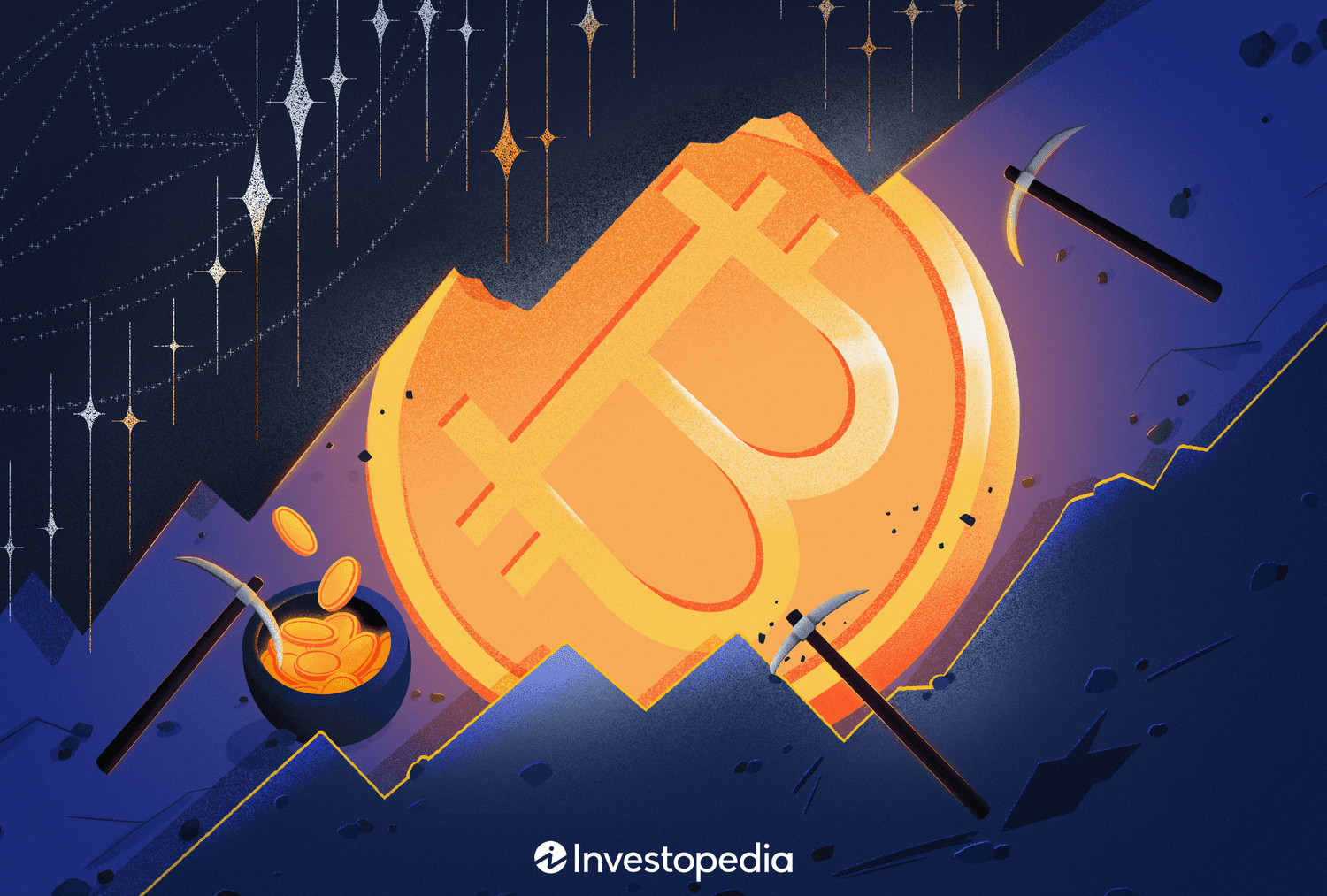
Key points
- Spot ether ETFs began trading in the U.S. today, with the funds initially having more than $10 billion in collective assets under management.
- Analysts expect the launch of spot ether ETFs to have a net negative impact on the underlying price of ether in the near term, due to expected outflows from the pre-existing Grayscale Ethereum Trust.
- Spot Bitcoin ETFs continue to see strong inflows, with BlackRock’s IBIT alone seeing more than $500 million in inflows on Monday.
- Franklin Templeton, a spot ETF issuer on bitcoin and ether, has invested in a project that intends to bring Ethereum technology to Bitcoin.
Nine-point ether exchange-traded funds (ETFs)) started trading on the stock market on Tuesday, but all the optimism ahead of their approval did not translate into gains for the cryptocurrency markets.
Ether (ETH), the native cryptocurrency of the Ethereum blockchain, dropped less than 1% around the $3,400 level as of 1:30 PM ET, while Bitcoin (BTC) fell more than 2% to around $66,000.
Ether ETFs’ Debut Isn’t as Flashy as Bitcoin ETFs’
Spot ether ETFs began trading at just over $10 billion assets under management (AUM)), according to Bloomberg Intelligence analyst James Seyffart, most of that money is in the current Grayscale Ethereum Trust (ETHE) which has now been converted into an ETF.
“In the long term, Grayscale will simultaneously have the highest and lowest fees in the market. The asset manager’s decision to keep its ETHE fee at 2.5% could lead to outflows from the fund,” Kaiko Research said in a note on Monday.
Outflows from ETHE, if they occur, would be similar to those faced by Grayscale’s Bitcoin Trust (GBTC) after spot bitcoin ETFs began trading in January of this year, most likely due to high fees for the two original funds. Grayscale’s existing fund charges 2.5% fees, while a new “mini” ether ETF will charge 0.15% and commissions for other ETFs are set at 0.25% or less.
Such outflows could impact the price of ether and market sentiment.
“There could be a pullback shortly after the launch of Ethereum spot ETFs, i.e. outflows from Grayscale Ether Trust could dampen market sentiment in the short term,” Jupiter Zheng, a partner at Hashkey Capital’s liquid fund, told The Block.
But Grayscale remains optimistic.
“Compared to the splashy debut of spot bitcoin ETPs in January, the launch of ethereum ETPs has been relatively muted,” said Zach Pandl, Grayscale’s head of research, adding that investors may be “undervaluing” ether ETFs that are “coming to the U.S. market in tandem with a shift in U.S. cryptocurrency policy and the adoption of tokenization by major financial institutions.”
Bitcoin ETF Inflows Continue to Rise
As for bitcoin, there is clearly no lack of demand for spot ETFs, such as BlackRock’s iShares Bitcoin Trust (IBITS) recorded its sixth-largest day of inflows in its short history on Monday, at $526.7 million, according to data from Farside Investors. Daily inflows for the overall spot bitcoin ETF market also hit their highest level since June 5.
In particular, asset manager Franklin Templeton, which has issued both bitcoin and ether ETFs, appears to have decided to cover its back when it comes to Ethereum by investing in Bitlayer, a way to implement Ethereum technology on a second-layer Bitcoin network, according to CoinDesk.
News
Spot Ether ETFs Start Trading Today: Here’s What You Need to Know

Key points
- Spot ether ETFs will begin trading on U.S. exchanges on Tuesday. Nine ETFs will trade on Cboe BZX, Nasdaq and NYSE Arca.
- Ether ETFs offer investors exposure to the price of their underlying assets.
- Commissions on these new ETFs generally range from 0.15% to 0.25%.
- These ETFs do not provide exposure to Ethereum staking.
The U.S. Securities and Exchange Commission (SEC) has officially approved nine ether spots (ETH)exchange-traded funds (ETFs) for trading on U.S. exchanges. Trading for these new cryptocurrency investment vehicles begins today. Here’s everything you need to know.
What new ether ETFs are starting to trade today?
Spot ether ETFs starting trading today can be found at Quotation, NYSE Arkand Cboe BZX. Here’s a breakdown of each ETF you can find on these three exchanges, along with the fund tickers:
Cboe BZX will list the Invesco Galaxy Ethereum ETF (QETH), the 21Shares Core Ethereum ETF (CETH), the Fidelity Ethereum Fund (FETH), the Franklin Ethereum ETF (EZET) and the VanEck Ethereum ETF (ETHV).
Nasdaq will have the iShares Ethereum Trust ETF (ETHA) created by BlackRock, which also operates the largest spot bitcoin ETF under the ticker IBIT.
NYSE Arca will list the Bitwise Ethereum ETF (ETHW) and the Grayscale Ethereum Trust (ETHE). The Grayscale Ethereum Mini Trust (ETH), which will begin trading on the same exchange.
How does an ether ETF work?
Spot ether ETFs are intended to offer exposure to the price of ether held by the funds. Ether is the underlying cryptocurrency of the Ethereal network, the second largest crypto network by market capitalization.
ETF buyers are buying shares of funds that hold ether on behalf of their shareholders. Different spot ether ETFs use different data sources when it comes to setting the price of ether. Grayscale Ethereum Trust, for example, uses the CoinDesk Ether Price Index.
None of the ETFs launching today include pointed etherwhich represents a potential opportunity cost associated with choosing an ETF over other options such as self-custody or a traditional cryptocurrency exchange.
Ether staking currently has an annual return of 3.32%, according to the Compass Staking Yield Reference Index Ethereum. However, it is possible that the SEC will eventually approve Ether staking held by ETFs.
How can I trade Ether ETFs?
ETFs can simplify the trading process for investors. In the case of cryptocurrencies, instead of taking full custody of the ether and taking care of your own private keysSpot ether ETFs allow investors to purchase the cryptocurrency underlying the Ethereum network through traditional brokerage accounts.
Today, not all brokers may offer their clients spot ETFs on cryptocurrencies.
What are the fees for ether ETFs?
The fees associated with each individual spot ether ETF were previously revealed In the S-1 OR S-3 (depending on the specific ETF) deposit associated with the offerings. These fees are 0.25% or less for all but one.
The Grayscale Ethereum Trust, which converts to an ETF, has a fee of 2.5%. The Grayscale Mini Ethereum Trust has the lowest fee at 0.15%. These fees are charged on an annual basis for the provider’s management of the fund and are in line with what was previously seen with spot bitcoin ETFs.
Brokers may also charge their own fees for cryptocurrency trading.
News
Kamala Harris Odds Surge Amid $81M Fundraise. What Does It Mean for Bitcoin and Cryptocurrencies?

Market odds and memecoins related to US Vice President Kamala Harris have soared as the latest round of donations tied to the Democratic campaign raised $81 million in 24 hours, bolstering sentiment among some traders.
The odds of Harris being declared the Democratic nominee have risen further to 90% on cryptocurrency betting app Polymarket, up from 80% on Monday and setting a new high.
Previously, in early July, bettors were only betting on 8%, but that changed on Saturday when incumbent President Joe Biden announced he would no longer run in the November election. Biden then approved Harris as a candidate.
Polymarket traders placed $28.6 million in bets in favor of Harris, the data showsThe second favorite is Michelle Obama.
Somewhere else, Memecoin KAMA based on Solanaa political meme token modeled after Harris, has jumped 62% to set a new all-time high of 2 cents at a market cap of $27 million. The token is up a whopping 4,000% from its June 18 low of $0.00061, buoyed primarily by the possibility of Harris becoming president.
As such, Harris has yet to publicly comment on cryptocurrencies or her strategy for the growing market. On the other hand, Republican candidate Donald Trump has expressed support for the cryptocurrency market and is expected to appear at the Bitcoin 2024 conference on Saturday.
However, some expect Harris or the Democratic Party to mention the sector in the coming weeks, which could impact price action.
“While he has not yet received the official nomination, there is consensus that last night’s development is in line with current Democratic strategy,” cryptocurrency trading firm Wintermute said in a Monday note emailed to CoinDesk. “Keep an eye on Democrats’ comments on this issue in the coming days.
“The prevailing assumption is that Harris will win the nomination and any deviation from this expectation could cause market volatility,” the firm added.
News
Top 30x Cryptocurrency and Coin Presales Today: Artemis Coin at #1, Others Are: BlockDAG, 99Bitcoin, eTukTuk, and WienerAI

The cryptocurrency market has seen a lot of growth and imagination lately, with new ventures popping up regularly. A critical pattern in this space is the rise of crypto pre-sales, which give backers the opportunity to get involved with promising projects early on. Artemis is a standout option for crypto investors looking to expand their portfolios amid the many pre-sales currently underway.
Cryptocurrency presales, commonly referred to as initial coin offerings (ICOs), allow blockchain ventures to raise capital by offering their local tokens to early backers before they become available on open exchanges. Investors can take advantage of these presales by purchasing tokens at a lower price. If the project is successful and the token’s value increases, investors stand to receive significant returns.
>>> Explore the best cryptocurrency pre-sales to buy now <<
The Ultimate List of the Top 5 Cryptocurrency Pre-Sales to Invest In
- Artemis: The aim of Artemis (ARTMS) will become the cryptocurrency equivalent of eBay or Amazon. The upcoming Phase 4 will see the launch of the Artemis Framework, which will serve as a stage for digital money exchanges where buyers, sellers, specialized organizations and those seeking administration can participate in coherent exchanges.
- DAG Block: uses Directed Acyclic Graph technology to increase blockchain scalability.
- 99bitcoin: operates as a crypto learning platform
- WienerAI uses AI-powered trading bots for precise market analysis.
- eTukTuk focuses on environmentally sustainable transportation options, such as electric vehicle charging infrastructure.
We have determined that Artemis is the best new cryptocurrency presale for investment after conducting extensive research. It presents itself as the unrivaled cryptocurrency presale choice currently open.
>> Visit the best cryptocurrency pre-sale to invest in now <<
Top 5 Crypto Pre-Sales and Best Cryptocurrencies for Investment Today
Artemis (ARTMS) is attempting to establish itself as the cryptocurrency version of eBay or Amazon. The Artemis Crypto System, which will act as a platform for cryptocurrency transactions, will be launched in Phase 4. Buyers, sellers, service providers, and requesters will all benefit from seamless trading with this system. Customers will be able to purchase things, such as mobile phones using digital money, as well as sell products such as involved bicycles and get paid in cryptocurrency. Additionally, crypto money can be used to pay for administrations such as clinical consultations, legitimate care, and freelance work. Artemis Coin will act as the main currency of the ecosystem, with Bitcoin and other well-known cryptocurrencies from various blockchain networks backing it.
Artemis Coin has increased in price from 0.00055 to 0.00101 from 0.00094. Artemis may be attractive to individuals looking to recoup losses in Bitcoin, as predicted by cryptocurrency analysts. At this point, it seems to present an interesting presale opportunity.
>>> Visit the best cryptocurrency pre-sale to invest in now <<
The world of digital currency pre-sales is an exciting and exciting opportunity that could open the door to game-changing blockchain projects. Projects in this article, like Artemis Coin, offer the opportunity to shape the future of various industries and the potential for significant returns as the industry develops.
However, it is imperative to approach these investments with caution, thorough research, portfolio diversification, and awareness of the risks. You can explore the digital currency pre-sale scene with greater certainty and increase your chances of identifying and profiting from the most promising venture opportunities by following the advice and methods in this article.
>>> Join the best cryptocurrency pre-sale to invest in now <<
-
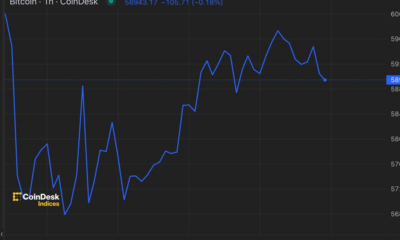
 News1 year ago
News1 year agoBitcoin (BTC) price recovery faces test on non-farm payrolls
-

 Bitcoin12 months ago
Bitcoin12 months ago1 Top Cryptocurrency That Could Surge Over 4,300%, According to This Wall Street Firm
-

 Altcoins12 months ago
Altcoins12 months agoOn-chain data confirms whales are preparing for altcoin surge with increased buy orders
-

 Bitcoin12 months ago
Bitcoin12 months agoThe US government may start accumulating Bitcoin, but how and why?
-
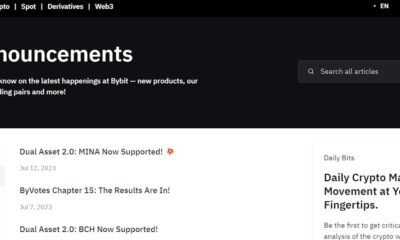
 News1 year ago
News1 year agoNew ByBit Listings for 2024: 10 Potential Listings
-

 News1 year ago
News1 year ago11 Best Crypto TikTok Accounts & Influencers in 2024
-

 Altcoins1 year ago
Altcoins1 year agoMarket giants have taken action!
-

 News1 year ago
News1 year ago11 Best Shitcoins to Buy in 2024: The Full List
-

 Ethereum1 year ago
Ethereum1 year agoTop Meme Coins by Market Capitalization in 2024
-

 News1 year ago
News1 year ago1.08 Trillion SHIBs Dumped on Major Crypto Exchange, What’s Going On?
-

 News1 year ago
News1 year ago19 Best Crypto Games to Play in 2024
-

 Altcoins1 year ago
Altcoins1 year agoAltcoin Recommended by Crypto Expert for Today’s Portfolio






